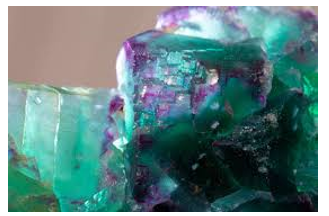INP-WealthPk
Faiza Tehseen
Revenue generation from the abundant fluorite deposits in Pakistan is far lower than its potential. Indigenous value-addition industry of this mineral can fetch handsome revenue for the state coffers, Chief Geologist of Balochistan-based Koh-e-Daleel Minerals (Pvt) Ltd Abdul Bashir told WealthPK.

He said, “It is estimated that Balochistan has fluorite reserves of 50,000 tons. Although Khyber Pakhtunkhwa is rich in fluorite deposits, proper quantification is still needed. Loralai and Parachinar districts of Balochistan, and Khyber Pakhtunkhwa (KP), respectively, are rich in fluorite deposits. In the vicinity of Kirthar foot belt, Dilband has fluorite deposits (the largest one in Pakistan) of more than 0.1 million tons.” The Mula-Zahri fluorite deposit, the second largest in Pakistan, contains approximately 6,750 tons of green fluorite. The third-largest deposit is located in Loralai, near the Sulaiman Fold Belt, where tunnel mining operations are ongoing. In southeast of Loralai, newly explored fluorite deposits show promising viability, with potential purity levels reaching 90% to 95%. Similarly, Chagai and Ras Koh have significant fluorite resources, but they remain underdeveloped due to a lack of governmental support. Only the local people are working and mining there. As a result of hydrothermal activity, fluorite mainly forms as a late crystalline mineral in felsic igneous rocks and occurs in limestone as vein deposits.
Rarely, it may occur in volcanic flow rocks – rhyolites. Not being the common constituent, fluorite sometimes forms in metamorphic rocks. Bashir said, “Fluorite is available in a variety of colors including yellow, blue, green, pink, black, and purple. Primarily, it is used as flux in steel manufacturing, coating for cooking utensils, opalescent glass, high-performance telescopes, hydrofluoric acid, sophisticated telescopes, and camera lenses. Fluorite with a viability of around 95% is widely used in a variety of industrial products related to the pharma, chemical, imaging, ceramics, and mechanical sectors. Gem-quality fluorite is also used in Jewellery and ornamentation crafting.” In Pakistan, fluorite is mined through open pit and tunnel mining methods. Poor infrastructure in fluorite mining areas prevents the establishment of value-addition units, especially high-tech purification plants. In-kind plants are necessary to enhance the purity level of fluorite up to 95%. Transportation of raw materials to these units increases the production costs.
Hence, government support is necessary to encourage investors in this mining segment. In an interview with WealthPK, miner and gemmologist Imran Babar said, “To produce value-added fluorite-based products, Pakistan lacks the high-tech machinery. Fluorite purity can be enhanced by a little dressing, which can fetch a good price without converting it to any other form. In Pakistan, the value-addition process mostly includes the production of fine concentrates, washing, drying, graining, or grinding into fine powdered form.” He said due to the poor infrastructure, miners mostly sell the fluorite outcrop in raw form at low rates; otherwise, they have to pay additional transportation charges, which enhances the production costs. If the government supports the miners in building infrastructures and value additional units, not only the miners will earn good profits but also the retained stakeholders will get a sustainable income.
Credit: INP-WealthPk













